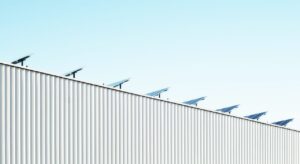While energy conservation is the practice of using less energy for economic and environmental reasons, energy efficiency means using specific products designed to use less energy. The two concepts are essentially similar, but use different methods. Examples of energy conservation include using smart appliances and energy-saving light bulbs in your home.
- change your daily behavior
You don’t have to buy energy-saving products to reduce your home’s energy use and increase your energy savings. Saving energy can be as simple as turning off lights or appliances when you don’t need them. You can also use less energy-intensive appliances by doing household chores by hand, such as drying clothes on a rack instead of putting them in the dryer, or washing dishes by hand.
The behavioral adjustment that has the greatest potential for utility savings is reducing the thermostat heating in the winter and using the air conditioner less in the summer. Heating and cooling costs account for nearly half of the average home’s utility bill, so reducing the intensity and frequency of heating and cooling provides the biggest savings.
- Replace light bulbs.
Traditional incandescent bulbs use excessive amounts of electricity and should be replaced more often than their energy-efficient alternatives. Incandescent halogen bulbs, compact fluorescent lamps (CFLs), and LED bulbs (LEDs) use 25-80 percent less electricity and last 3-25 times longer than traditional bulbs.
Although energy-saving bulbs are more expensive, their efficient use of energy and longer life means they cost less in the long run.
- use smart extension cords.
“Phantom loads,” or electricity used by electronics when they are off or on standby, are a major source of energy waste. In fact, it’s estimated that 75% of the energy used to power consumer electronics is consumed when they’re off, which can cost you up to $200 a year. Smart power splitters, also known as advanced power splitters, eliminate the problem of phantom loads by turning off power to electronics when not in use. Smart extenders can be set to turn off at designated times, during periods of inactivity, via remote switches, or based on the status of the “main” device. - Set a programmable or smart thermostat
The programmable thermostat can be set to automatically turn off or reduce heating and cooling while you sleep or are away. When you install a programmable thermostat, you eliminate useless energy use for heating and cooling without upgrading your HVAC system. - Buy energy efficient appliances
On average, appliances account for about 13% of your household’s total energy use. There are two figures to consider when buying an appliance: the initial purchase price and the annual cost of operation. While the initial cost of energy-efficient appliances may be higher, their operating costs are often 9-25% lower than conventional models.
When buying an energy-efficient appliance, look for appliances with the ENERGY STAR label, which is a federal guarantee that the appliance will use less energy during use and in standby mode than standard models. Energy savings depend on the specific appliance. For example, ENERGY STAR-certified washing machines use 25% less energy and 45% less water than conventional washing machines, while ENERGY STAR-certified refrigerators use only 9% less energy.
- Reduce water heating costs
Heating water is a major source of your overall energy consumption. In addition to buying an energy-efficient water heater, there are three ways to reduce your water heating costs: you can simply use less hot water, turn down the thermostat on the water heater, or insulate the water heater and the first six feet of hot and cold water pipes. - Install energy-efficient windows
Windows are a significant source of energy loss – they can account for up to 10-25% of your total heating bill. To prevent heat loss through your windows, you can replace single-glazed windows with double-glazed products.
For homes in colder regions, gas-filled windows with “low-emissivity” coatings can significantly reduce your heating bills. In addition, interior or exterior storm windows can reduce unnecessary heat loss by 10 to 20 percent. You should especially consider storm windows if your area experiences frequent extreme weather events.


